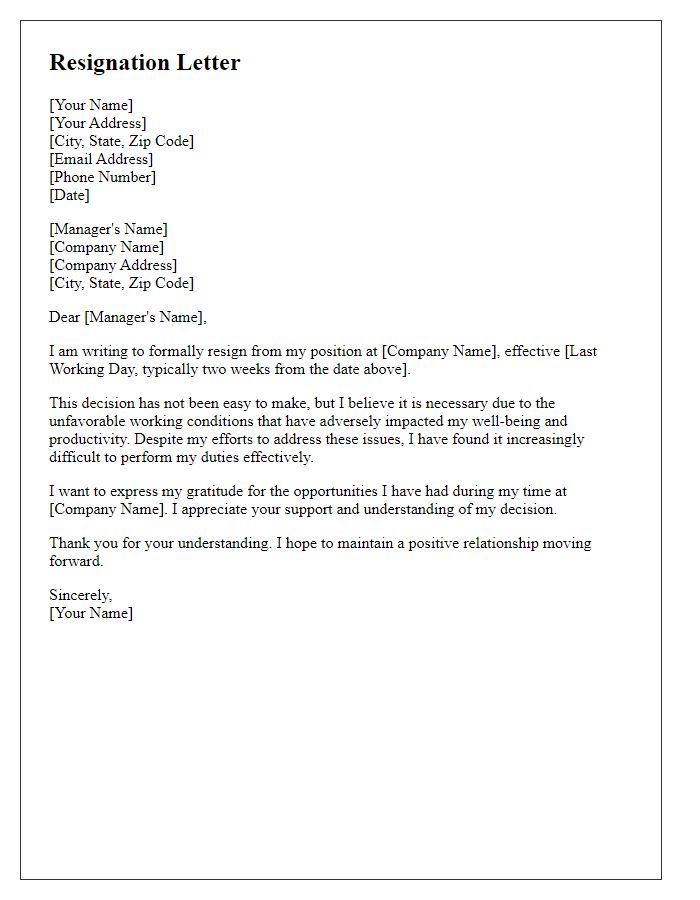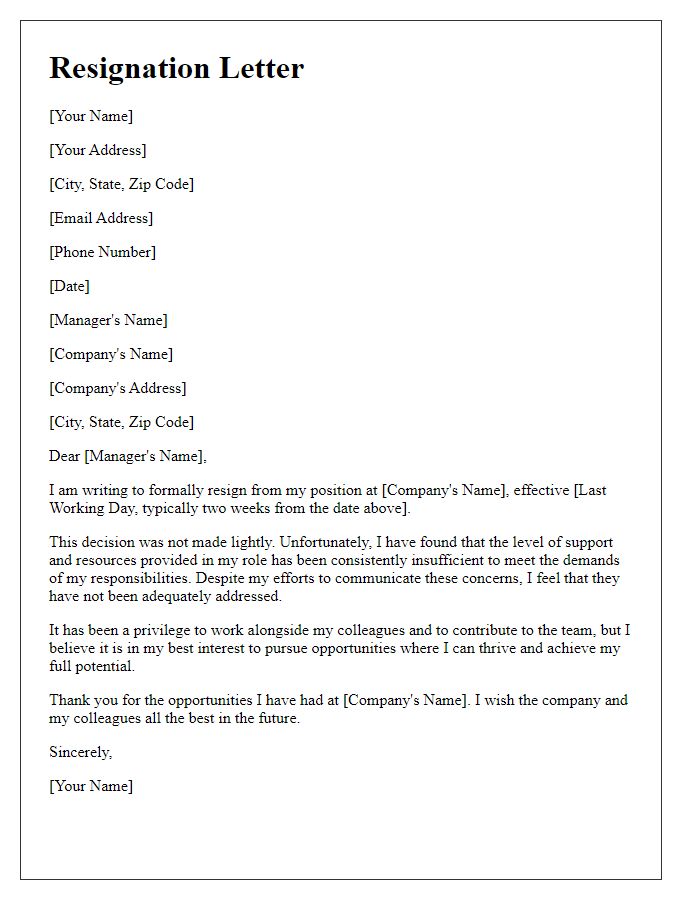When it comes to leaving a job, expressing your feelings in a resignation letter can be pivotal. It's essential to convey your reasons honestly while maintaining professionalism, especially if you've faced unsatisfactory conditions. A well-crafted letter not only communicates your decision but also opens the door for future conversations or opportunities. If you're interested in learning how to write an impactful resignation letter, read on for helpful tips and a sample template!

Professional tone and language
Resigning from a position often stems from dissatisfaction with workplace conditions. Employees frequently face issues such as poor management practices, inadequate resources for job completion, or lack of career growth opportunities. These factors can lead to diminished morale and productivity, prompting individuals to seek better environments. When crafting a resignation letter, incorporating specific details is important. Highlighting incidents, such as how limited support affected project outcomes, or referencing employee turnover rates (which might indicate a toxic work culture) provides context. Clarity and professionalism in tone remain essential, ensuring a respectful transition while leaving the door open for potential future connections.
Clear reason for resignation
Workplace dissatisfaction can lead to significant career transitions, often resulting in resignation from a position. Circumstances such as inadequate career advancement opportunities, excessive workloads, or poor management practices can contribute to a negative environment. For instance, an employee in a technology firm may experience burnout due to unrealistic project deadlines set by upper management. Additionally, lack of recognition for contributions can diminish job satisfaction, as seen in cases where employees consistently exceed performance targets without reward or acknowledgment. Resigning under such unsatisfactory conditions allows individuals to seek healthier work environments that align with their values and expectations for professional fulfillment.
Specific examples of unsatisfactory conditions
Heavy workloads can lead to employee burnout, significantly impacting job satisfaction. Inadequate resources such as outdated software or insufficient training programs can hinder productivity and contribute to frustration among employees. Lack of communication from management often results in confusion regarding expectations and company goals, disrupting team cohesion. Insufficient recognition or rewards for achievements can lead to a sense of undervaluation, demotivating staff. Additionally, ineffective conflict resolution processes create a hostile work environment, further exacerbating turnover rates within organizations.
Notice period details
An employee's resignation due to unsatisfactory conditions often stems from several factors such as inadequate working environment, lack of career advancement opportunities, or poor management practices. This decision requires careful consideration of notice period specifics, usually dictated by organizational policy or employment contract. Commonly, notice periods range from two weeks to one month, depending on the role and organizational standards. Properly notifying human resources or immediate supervisors about the intention to resign ensures a smooth transition and upholds professional integrity during the parting process. Noteworthy considerations include ensuring that any final projects are handed over efficiently and expressing gratitude for past opportunities, even in light of grievances.
Expression of gratitude and willingness to assist in transition
Resignation from a position often stems from various factors, including unsatisfactory conditions at the workplace, such as lack of support, inadequate resources, or negative work culture. It is essential to express gratitude towards the organization, highlighting positive experiences gained during employment. Offering assistance during the transition period demonstrates professionalism and respect for colleagues and management. Emphasizing willingness to help train a replacement or wrap up ongoing projects fosters goodwill and maintains a positive relationship for future networking opportunities. It also signifies a mature approach to career development, ensuring a smooth handover of responsibilities.
Letter Template For Resignation Due To Unsatisfactory Conditions Samples
Letter template of resignation because of unfavorable working conditions.

Letter template of resignation as a result of insufficient support from management.

Letter template of resignation prompted by lack of growth opportunities.

Letter template of resignation because of excessive workload and stress.

Letter template of resignation related to unresolved workplace conflicts.









Comments